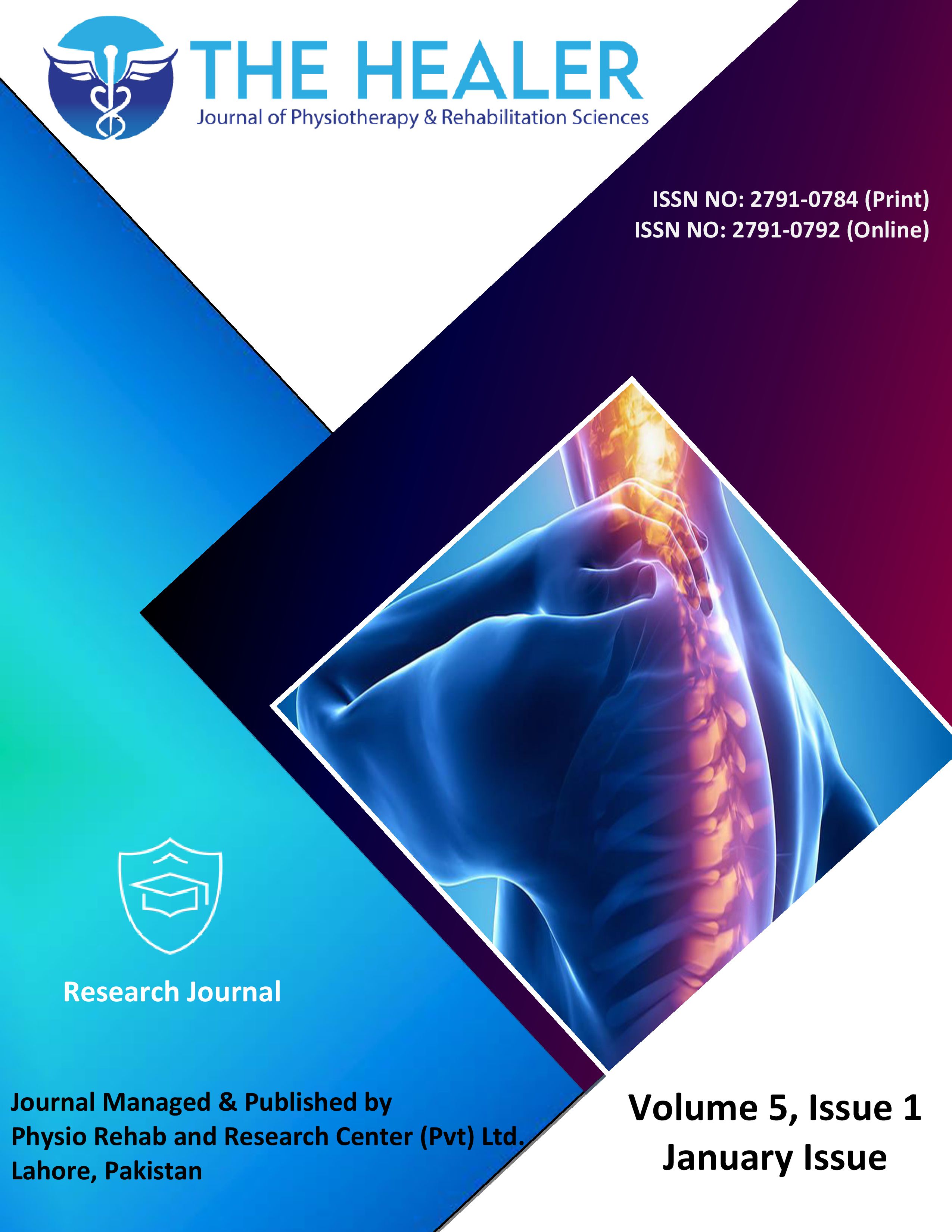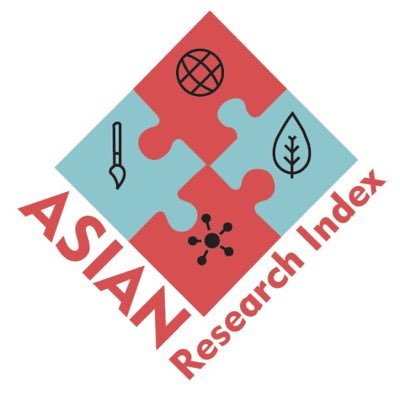Association of Lifestyle and Dietary Factors of Young Children with Diarrhea in Pakistan: An Evidence from Pakistan Demographic and Health Survey 2017-2018
Lifestyle and Dietary Factors of Young Children with Diarrhea in Pakistan
DOI:
https://doi.org/10.55735/hjprs.v5i1.327Keywords:
Diarrhea, Lifestyle and dietary factors , Pakistan demographic and health surveyAbstract
Background: Globally childhood diarrhea accounts for 1.7 billion cases every year according to World Health Organization (WHO) 2024 report. According to the Federal Directorate of Immunization, the incidence of diarrhea is around 24% in Pakistan according to the stats provided by WHO. In Pakistan, childhood mortality and morbidity rates are also high due to multiple reasons. Among them, lifestyle and dietary factors play a vital role. Objective: This study aims to investigate the association between lifestyle and dietary factors and the prevalence of childhood diarrhea in Pakistan. Methodology: Data from the Pakistan Demographic Health Survey (PDHS) 2017-2018 was taken to check the association between the above-mentioned independent (lifestyle and dietary factors) and dependent variables (diarrhea). Data was analyzed using SPSS and univariate, bivariate, and multivariate analysis was done using descriptive statistics, chi-square statistics, and binary logistic regression. Categorical variables were presented as frequencies and percentages. Continuous variables were checked for normal distribution using histograms, with normally distributed variables reported as means and standard deviations. Skewed data was presented using medians and interquartile ranges. Chi-square statistics were used to test associations between dietary and lifestyle factors and the outcome variable (diarrhea). Binary logistic regression was performed to identify associations between multiple independent variables (dietary and lifestyle factors) and childhood diarrhea. Results: More than half of the mothers (56%) had no formal schooling. Very few participants (2.1%) had health insurance coverage. Regarding child food diversity, about 10% of babies consumed formula, 3.8% consumed yogurt, and 22.3% consumed eggs, with other food items being less frequently consumed. Significant predictors of childhood diarrhea included maternal (p=0.013) and paternal education (p=0.029), breastfeeding duration (p<0.001), health facility visit in the last 12 months (0.023), decision maker of child healthcare (0.019) and early introduction of non-breastmilk foods (p<0.001). Conclusion: Key factors influencing childhood diarrhea include maternal education, breastfeeding practices, and healthcare access, suggesting targeted interventions that could reduce childhood morbidity.
Downloads
References
Clinical management of acute diarrhoea: WHO/UNICEF joint statement. (n.d.). Retrieved August 11, 2024, from https://iris.who.int/handle/10665/686271. Marks SL. Diarrhea. Canine and Feline Gastroenterology 2013: 99.
UNICEF D. Annual report 2015. New York: UNICEF 2015.
Troeger C, Blacker BF, Khalil IA, et al. Estimates of the global, regional, and national morbidity, mortality, and aetiologies of diarrhoea in 195 countries: a systematic analysis for the Global Burden of Disease Study 2016. The Lancet Infectious Diseases 2018; 18(11): 1211-28. DOI: https://doi.org/10.1016/S1473-3099(18)30362-1
Fischer WCL, Rudan I, Liu L, et al. Global burden of childhood pneumonia and diarrhea. Lancet 2013; 381(9875): 1405-16. DOI: https://doi.org/10.1016/S0140-6736(13)60222-6
Moraga P, Collaborators GCoD. Global, regional, and national age-sex specific mortality for 264 causes of death, 1980-2016: a systematic analysis for the Global Burden of Disease Study 2016. The Lancet 2017; 390(10100): 1151-210. DOI: https://doi.org/10.1016/S0140-6736(17)32152-9
Shahbaz S, Howard N. Anaesthesia delivery systems in low and lower-middle-income Asian countries: a scoping review of capacity and effectiveness. PLOS Global Public Health 2024; 4(3): e0001953. DOI: https://doi.org/10.1371/journal.pgph.0001953
Black RE, Victora CG, Walker SP, et al. Maternal and child undernutrition and overweight in low-income and middle-income countries. The Lancet 2013; 382(9890): 427-51. DOI: https://doi.org/10.1016/S0140-6736(13)60937-X
Bakir H, Hadi M, Jurdi M. Towards a renewed public health regulatory and surveillance role in water, sanitation and hygiene. Information for authors 1995; 1.
Rueter K, Prescott SL, Palmer DJ. Nutritional approaches for the primary prevention of allergic disease: An update. Journal of Paediatrics and Child Health 2015; 51(10): 962-9. DOI: https://doi.org/10.1111/jpc.12951
Freeman M, Chard A, Nikolay B, et al. Associations between school-and household-level water, sanitation and hygiene conditions and soil-transmitted helminth infection among Kenyan school children. Parasites & Vectors 2015; 8: 1-13. DOI: https://doi.org/10.1186/s13071-015-1024-x
Mshida HA, Kassim N, Mpolya E, Kimanya M. Water, sanitation, and hygiene practices associated with nutritional status of under-five children in semi-pastoral communities Tanzania. The American Journal of Tropical Medicine and Hygiene 2018; 98(5): 1242. DOI: https://doi.org/10.4269/ajtmh.17-0399
Shahbaz S, Zakar R, Fischer F, Howard N. Professional Obstacles to Anaesthesiology Practice in Punjab, Pakistan: Qualitative Study of Consultant Anaesthesiologists’ Perspectives. International Journal of Environmental Research and Public Health 2022; 19(20): 13427. DOI: https://doi.org/10.3390/ijerph192013427
Kumar R, Mahmood T, Naeem N, Khan SA, Hanif M, Pongpanich S. Minimum dietary diversity and associated determinants among children aged 6–23 months in Pakistan. Scientific Reports 2024; 14(1): 2639. DOI: https://doi.org/10.1038/s41598-024-51705-4
Arimond M, Ruel MT. Dietary diversity is associated with child nutritional status: evidence from 11 demographic and health surveys. The Journal of Nutrition 2004; 134(10): 2579-85. DOI: https://doi.org/10.1093/jn/134.10.2579
Sumampouw OJ, Nelwan JE, Rumayar AA. Socioeconomic factors associated with diarrhea among under-five children in Manado Coastal Area, Indonesia. Journal of Global Infectious Diseases 2019; 11(4): 140-6. DOI: https://doi.org/10.4103/jgid.jgid_105_18
Desmennu AT, Oluwasanu MM, John-Akinola YO, Oladunni O, Adebowale SA. Maternal education and diarrhea among children aged 0-24 months in Nigeria. African Journal of Reproductive Health 2017; 21(3): 27-36. DOI: https://doi.org/10.29063/ajrh2017/v21i3.2
Rheinländer T, Samuelsen H, Dalsgaard A, Konradsen F. Perspectives on child diarrhoea management and health service use among ethnic minority caregivers in Vietnam. BMC Public Health 2011; 11: 1-12. DOI: https://doi.org/10.1186/1471-2458-11-690
Dickson KS, Ayebeng C, Adu-Gyamfi AB, Okyere J. Postnatal care service utilisation for babies within the first two months after childbirth: an analysis of rural-urban differences in eleven Sub-Saharan African countries. BMC Pregnancy and Childbirth 2023; 23(1): 423. DOI: https://doi.org/10.1186/s12884-023-05758-4
Pradhan HS, Mohakud NK, Kavitha A, Nayak MK, Satpathy SK. Out-of-pocket health expenditure on diarrheal illness among under-five children in a teaching hospital in Odisha, India. Indian Journal of Public Health 2020; 64(3): 252-7. DOI: https://doi.org/10.4103/ijph.IJPH_258_19
Adane M, Mengistie B, Kloos H, Medhin G, Mulat W. Sanitation facilities, hygienic conditions, and prevalence of acute diarrhea among under-five children in slums of Addis Ababa, Ethiopia: baseline survey of a longitudinal study. PloS One 2017; 12(8): e0182783. DOI: https://doi.org/10.1371/journal.pone.0182783
Nyasulu PS, Ngamasana E, Kandala N-B. Sources of health care among under-5 Malawian children with diarrhea episodes: an analysis of the 2017 demographic and health survey. Global Pediatric Health 2019; 6: 2333794X19855468. DOI: https://doi.org/10.1177/2333794X19855468
Mallick R, Mandal S, Chouhan P. Impact of sanitation and clean drinking water on the prevalence of diarrhea among the under-five children in India. Children and Youth Services Review 2020; 118: 105478. DOI: https://doi.org/10.1016/j.childyouth.2020.105478
Clemens J, Elyazeed RA, Rao M, et al. Early initiation of breastfeeding and the risk of infant diarrhea in rural Egypt. Pediatrics 1999; 104(1): e3-e. DOI: https://doi.org/10.1542/peds.104.1.e3
Getachew A, Guadu T, Tadie A, et al. Diarrhea Prevalence and Sociodemographic Factors among Under‐Five Children in Rural Areas of North Gondar Zone, Northwest Ethiopia. International Journal of Pediatrics 2018; 2018(1): 6031594. DOI: https://doi.org/10.1155/2018/6031594
Ogechi UP, Chilezie OV. Assessment of dietary diversity score, nutritional status and socio-demographic characteristics of under-5 children in some rural areas of Imo State, Nigeria. Malaysian Journal of Nutrition 2017; 23(3): 425-35.
Digre P, Simpson E, Cali S, Lartey B, Moodley M, Diop N. Caregiver perceptions and utilization of oral rehydration solution and other treatments for diarrhea among young children in Burkina Faso. Journal of Global Health 2016; 6(2). DOI: https://doi.org/10.7189/jogh.06.020407
Patel A, Mamtani M, Dibley MJ, Badhoniya N, Kulkarni H. Therapeutic value of zinc supplementation in acute and persistent diarrhea: a systematic review. PLoS One 2010; 5(4): e10386. DOI: https://doi.org/10.1371/journal.pone.0010386
Organization WH, UNICEF. Clinical management of acute diarrhoea: WHO/UNICEF joint statement. Clinical Management of Acute Diarrhoea: WHO/UNICEF Joint Statement; 2004.

Downloads
Published
License
Copyright (c) 2025 The Healer Journal of Physiotherapy and Rehabilitation Sciences

This work is licensed under a Creative Commons Attribution 4.0 International License.














